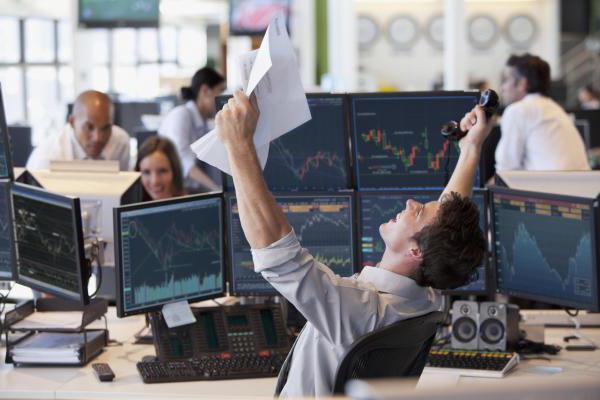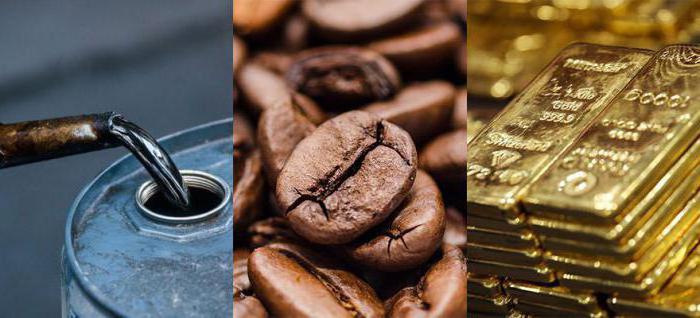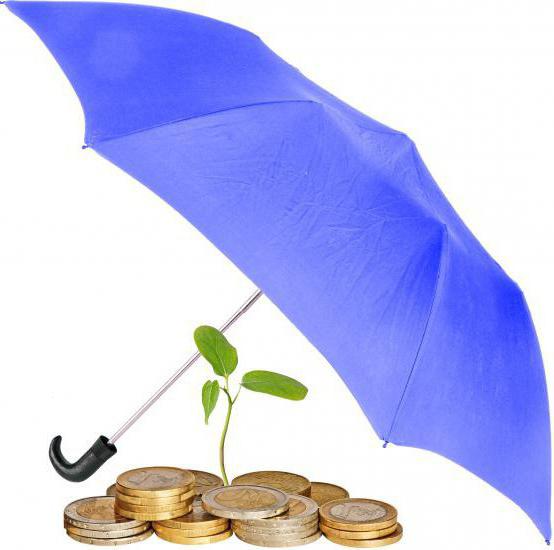An exchange market cannot be imagined without derivatives or derivative financial instruments. They got their name due to the fact that they do not exist on their own, but are formed from some asset called the underlying one. Derivatives include options, futures, swaps and forwards. However, the first two types were most popular, as they are freely traded on the exchange.

Acquaintance with derivatives
A futures contract is a futures contract that imposes on the parties an obligation in the future to complete a transaction to sell the underlying asset at a fixed price, which the seller and buyer agree today. The first such contracts appeared in the 19th century due to the need for farmers and traders to insure themselves in advance against various surprises of the coming season. In fact, then the futures market was born. This contract has several key parameters:
- lot - the amount of the underlying asset;
- transaction price;
- expiration date - date of fulfillment of the obligation.
An option is also a fixed-term contract. But unlike futures, it imposes an obligation only on the seller, called the subscriber. But the buyer (holder) is free to decide, at his discretion, whether to conclude a deal on negotiated terms or let him “burn” unfulfilled. An option has the following parameters:
- premium - the value that the buyer pays the seller at the time the option is acquired;
- strike - contract execution price;
- lot;
- date of expiration.
There are two types of options:
- call (count) - entitles the holder to buy the underlying asset from the subscriber at a strike price;
- put - entitles the holder to sell the underlying asset to the subscriber at a strike price.
Many novice traders do not fully understand what futures and options are. They make a lot of mistakes in trading these tools. To better understand this issue, we consider the economic meaning of both types of contracts, which was originally invested in them.
Futures: Trading Tomorrow
Starting to plant corn in the spring, a certain farmer is going to sell it at a certain price. However, various factors, for example, good weather or increased competition, can greatly reduce the price of goods by autumn. Therefore, it is beneficial for the farmer to agree on the sale of the future crop at a reasonable price now. At the same time, there is a grain processing company that is interested in concluding supply agreements in advance in order to avoid interruptions in raw materials in the fall. The cost of corn proposed by the farmer seems to be quite acceptable to the company's management. And already in March, they conclude a contract for the supply on September 15 of a certain number of bushels (unit volume of grain) of the product at an agreed price.
In the modern interpretation, the farmer acted as the seller of the futures, and the grain processing enterprise as the buyer. The underlying asset is corn, the lot is the number of bushels, and the expiration date is September 15th.

Option: purchase and sale of hopes and doubts
The option has a slightly different essence, although its goal is the same for the buyer - insurance in case of a bad market situation. Using the example of a farmer and an enterprise, this will look as follows.
The farmer hopes to sell the crop for $ 500 a bushel this fall. As expects rapid growth in the cost of corn. He writes out a call option with a strike of 500 for a certain number of bushels and sells it for a small premium. The processing company also sees some prerequisites for rising grain prices.Therefore, it acquires this option as insurance in case the price of corn soars. Then it will be profitable to fulfill the contract, that is, buy raw materials from the farmer at $ 500 per bushel. If this does not happen, then the option will “burn out”. In this case, the company will lose the premium paid, and the farmer will earn it. At the same time, the risks of the company are minimal - only the size of the premium paid. The farmer loses potential profit if the price of corn goes above $ 500, because he could sell his crop more expensive. But on the other hand, he wins greatly in the event of a market fall.
Modern Exchange Derivatives
Since the time when the first financial derivatives appeared, the market has changed a lot. What are futures and options today? Firstly, they have become “faceless”, that is, contracts are not concluded between a particular seller and buyer, but are freely traded on the exchange. Secondly, they almost completely lost their delivery function. Many futures are settlement, that is, they assume only crediting the margin to the trader's account or debiting it. About 90% of the options expire without exercise, allowing sellers to earn premiums. Thirdly, exchange derivatives have become clearly standardized - all parameters, except for the price, are regulated by the specification of the contract. And the expiration date is set by the exchange.
In developed markets, futures and options for currency pairs are in use today, stock indices interest rates, stocks and bonds, as well as on the assets of commodity markets: oil, gas, metals, grain, coffee, corn and others. There are even derivatives for weather events: rain, frost, snowfall, hurricane. In Russia, the derivatives market is in a developing state, however, a fairly wide selection of contracts is also presented here.

Futures and options as a hedging tool
Options, futures and other derivative financial instruments, being invented for the protection (hedging) by entrepreneurs of their assets, are coping well with this role today. Consider one of the options on the example of the purchase of an option.
The trader has 1,000 shares of Gazprom, which he had previously bought at 120 rubles. Now they are quoted at 145 p. Having sold them, he can take profit in the amount of 25,000 (without taking into account the broker's commission and the exchange). However, the trader does not intend to do this, because he sees the prerequisites for further growth. But I would like to protect potential profit. To do this, he acquires 10 put options on Gazprom futures with a flock of 14,500 worth 1,000 rubles each as insurance.
If by the time of expiration the asset drops to 120 rubles, the trader will exercise options and get a short position of 10 futures contracts perfect at a price of 14,500 rubles. At the same time, the market value will fluctuate at the level of 12,000. Indeed, futures quotes at the time of expiration are compared with the price of a comparable number of shares. Having closed the deal, the trader will fix the margin in the amount of 25,000 rubles. Thus, his profit, taking into account the premium paid for options, will be 15,000 rubles. At the same time, he will maintain a position in stocks. If at the time of the expiration of the options Gazprom shares will cost more than 145 rubles, the trader will not fulfill the contracts and lose the premium paid. However, this is fully or partially offset by an increase in the price of shares.
It turns out that to protect his position in stocks, the trader spent part of the earned margin. However, if he had not bought options, then in the event of a fall in prices he would have lost all profits from the transaction with Gazprom shares. Thus, such an acquisition is insurance against adverse price movements.

Derivatives specs
Speaking about what futures and options are, one cannot but mention the speculative value of derivatives. Traders are attracted by lower commissions of the derivatives market and a large selection of tools for trading. But the main advantage of financial derivatives is the margin lending mechanism or “leverage” contained in them.In the derivatives market, you do not need to pay the full price of the contract for the purchase of a futures contract, but only guarantee security (CS). Its size is set by the exchange and varies depending on the instrument. But on average it is about 10–20%. This amount is received by the exchange as a guarantor of a futures transaction. And after closing the position, it is returned to the trader.
Let's go back to the example of Gazprom. For 100,000 rubles, a trader can buy 689 shares of the company on the spot market at a price of 145 rubles apiece. For futures on Gazprom GO set at 14%. Suppose the price of a contract for 100 shares of a company moves near the mark of 14,600 rubles (futures quotes are usually slightly higher than the cost of a proportional amount of the underlying asset). Then the GO of one of them will amount to 2,044 rubles. And at his own expense, a trader can purchase 48 Gazprom futures, which is equivalent to 4,800 shares. To buy such an amount in the spot market, he would have to spend almost 7 times more money! Impressive difference, isn't it? At the right moment, the trader sells the acquired futures. And only an impressive amount of margin remains on his account.
However, derivatives traders not only have great profit potential, but also carry high risks. Through the mechanism of margin lending, both income and losses increase. So, an unsuccessful investment in futures and options can hurt the account. It will not work to become a “long-term investor” in derivatives, since they have a limited duration of circulation. Therefore, to fully understand what futures and options are, it is imperative to understand their nature.

We have provided only basic information about exchange derivatives and their application. In practice, there are many different strategies using futures, options and an underlying asset that allow skilled traders to earn income. However, it is important not to forget that the rules for managing capital and risks in the derivatives market must be followed clearly and rigorously!








